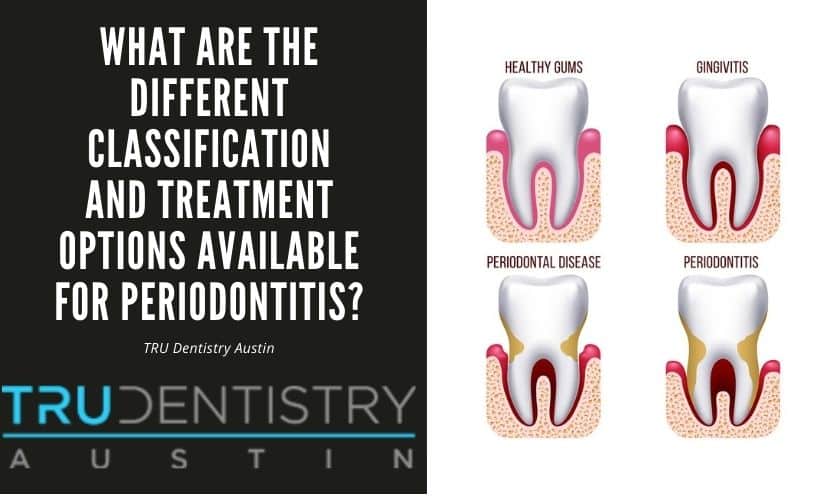Periodontitis occurs due to a prolonged and untreated periodontal condition and is a severe form of gingivitis. Compared to gingivitis, Periodontitis can severely affect your teeth by making them loose and detach as time passes by. It is a more severe gum disease condition and requires immediate medical attention. It occurs when the gum disease spreads to the surrounding tissues, thus causing infection and swelling. It is a widespread disease and affects many people across the globe. If left untreated, Periodontitis may lead to a dentist going ahead with tooth extraction.
Periodontitis is mainly classified into two types. They are,
- Chronic Periodontitis
- Aggressive Periodontitis
Chronic Periodontitis
This type of periodontitis is easier to treat and maintain compared to aggressive Periodontitis. It is identified when rapid tooth loss happens in adults. Some of the causes that result in this disease are fluctuating sugar levels and poor glycemic control in a patient. This disease will further impact the glycemic levels in diabetic patients, thus affecting their controlled lifestyle and impacting their efforts to recover from diabetes. Furthermore, dentists in Austin may conduct tests to determine whether the patient has diabetes or cancer cell formation whenever they are diagnosed with Chronic Periodontitis.
Aggressive Periodontitis
It is similar to chronic Periodontitis. However, it is rapid and affects a much younger population, especially those below 30 years of age.
Procedure
Dentists will initiate a cleaning process for removing the plaque and calculus accumulated within the teeth enamel and those accumulated within the gum line. Since the area below the gum line is considered very sensitive, the affected patient will have to follow more appointments with the dentist. It is required in severe infection of Periodontitis in which a dentist will have to perform scaling, root planing, bone grafting and crown lengthening. Scaling is performed for the removal of the plaque layer from the teeth. For removing the scales, ultrasonic instruments are used by a dentist in Austin. On the other hand, root planing is performed for making the teeth surface softer so that it prevents the accumulation of plaque. However, the Austin dentist may recommend bone grafting if the infection is severe, especially if the patient experiences loss of bony tissue due to the spread of infection.
The treatment procedure requires the patient to maintain proper oral hygiene. Hence the name periodontal maintenance. Re-evaluation is also essential upon the completion of the treatment. The patient should visit the dentist in Austin at least once in three months. Regular cleaning is also necessary for preventing bacteria from growing within the tissues. The earlier the infection is detected, the patient can succeed in recovering from Periodontitis.
Symptoms of Periodontal Disease
Understanding the early symptoms of periodontal disease may help you get proper treatment from an experienced dentist in Austin at the right time. It is a more severe form of gingivitis and occurs because of the patient’s poor oral hygiene. Regular brushing, proper flossing and frequent dental checkups may prevent developing periodontal diseases.
The symptoms are:
- Bad breath that remains consistent for days, weeks or months
- Gums that are red or swollen
- Bleeding Gums
- Tender Gums
- Pain while chewing food
- Teeth that have become loose
- Sensitive Teeth
Do you think you are having the symptoms of periodontal disease as mentioned above? Then consult TRU Dentistry Austin dentist for Periodontitis. The dentist will carefully examine your teeth to check whether you have Periodontitis or not.
